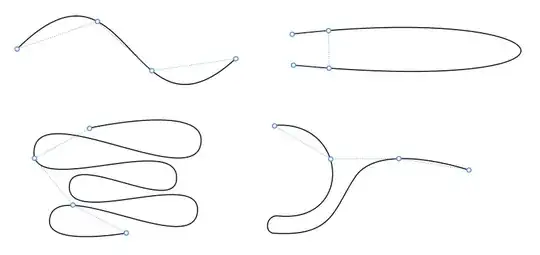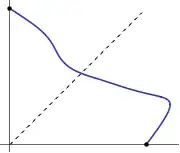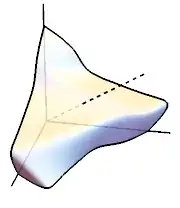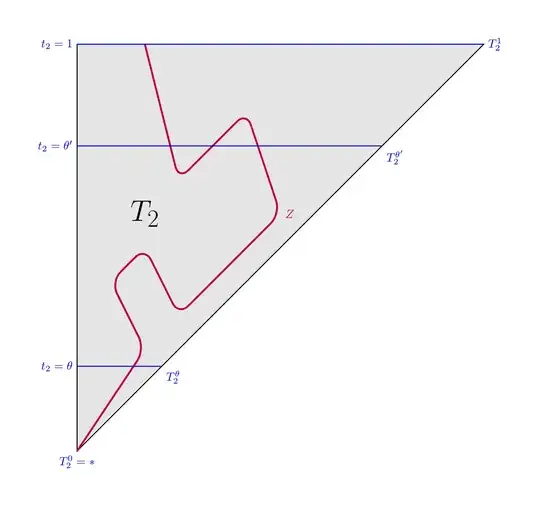This question build on top of this other question: Dividing a curve into chords of equal length, for which I wrote an (incomplete) answer. I got the feeling we might need some help from a real topologist. Let me repeat the crucial definitions. We are dealing with curves $c:[0,1]\to\Bbb R^m$ which are assumed to be continuous maps.
Definition. Given a curve $c:[a,b]\to\Bbb R^m$ and $n\in\Bbb N$, an equichordal subdivision of $c$ into $n$ segments is a sequence $t_i,i=0,...,n$ with $$a=t_0\leq t_1\leq\cdots\leq t_{n-1}\leq t_n=b, \qquad \|c(t_{i-1})-c(t_i)\|=\Delta,\quad \text{for all $i=1,...,n$}$$ and some chord length $\Delta$.
Essentially this means we are looking for $n+1$ points on a curve (including the end points) so that neighboring points all have the same Euclidean distance $\Delta$ from each other. Now the big question is:
Question: Is it always possible for arbitrary curves $c$ and $n\in\Bbb N$ to equichordally subdivide $c$ into $n$ segments?
It seems not so strange to assume that this might be. However, look at the following examples for $n=3$. The subdivision might not at all follow the shape of the curve or will look similar to a subdivision with equal arc lengths (for small $n$). Most of the time, for a given $n$ the final chord length $\Delta$ is pretty unpredictable.
Further information for the interested reader:
- In one of my answers I gave a proof that felt good at first, but I cited a result incompletely. I used this statement despite some answer below gave a nice counter-example. Currently I have no idea how to justify that this is no problem. I also think that my proof might be too complicated, even though it proves a more general statement (the existence of a continuous transition from a trivial subdivision to a subdivision of the whole curve).
- In this answer Rahul gave a proof for the cases $n=2$ and $n=3$. He (and now me too) got the feeling that this might be generalizable by someone with enough experience in topology (homotopy maybe?). I really prefer Rahul's approach for its simplicity. He even posted a follow up question on it over here.
- As far as I know, there is no easy way to find such a subdivision. For sufficiently well behaved curves it might be possible to just choose some reasonable subdivision and wiggling the points a bit to bring them into the right spot for equichordality. However, this will fail in general. Also, given an equichordal subdivision of some subcurve of $c$, it is highly non-trivial to "stretch" it out to cover the whole curve while still keeping the desired property. I found counterexamples for most easy approaches. For example, test your procedure on the examples given above.
- I have not studied any possible counter-examples in higher dimensions. I only looked at plane curves so far. I have no clue what might hide over there.





